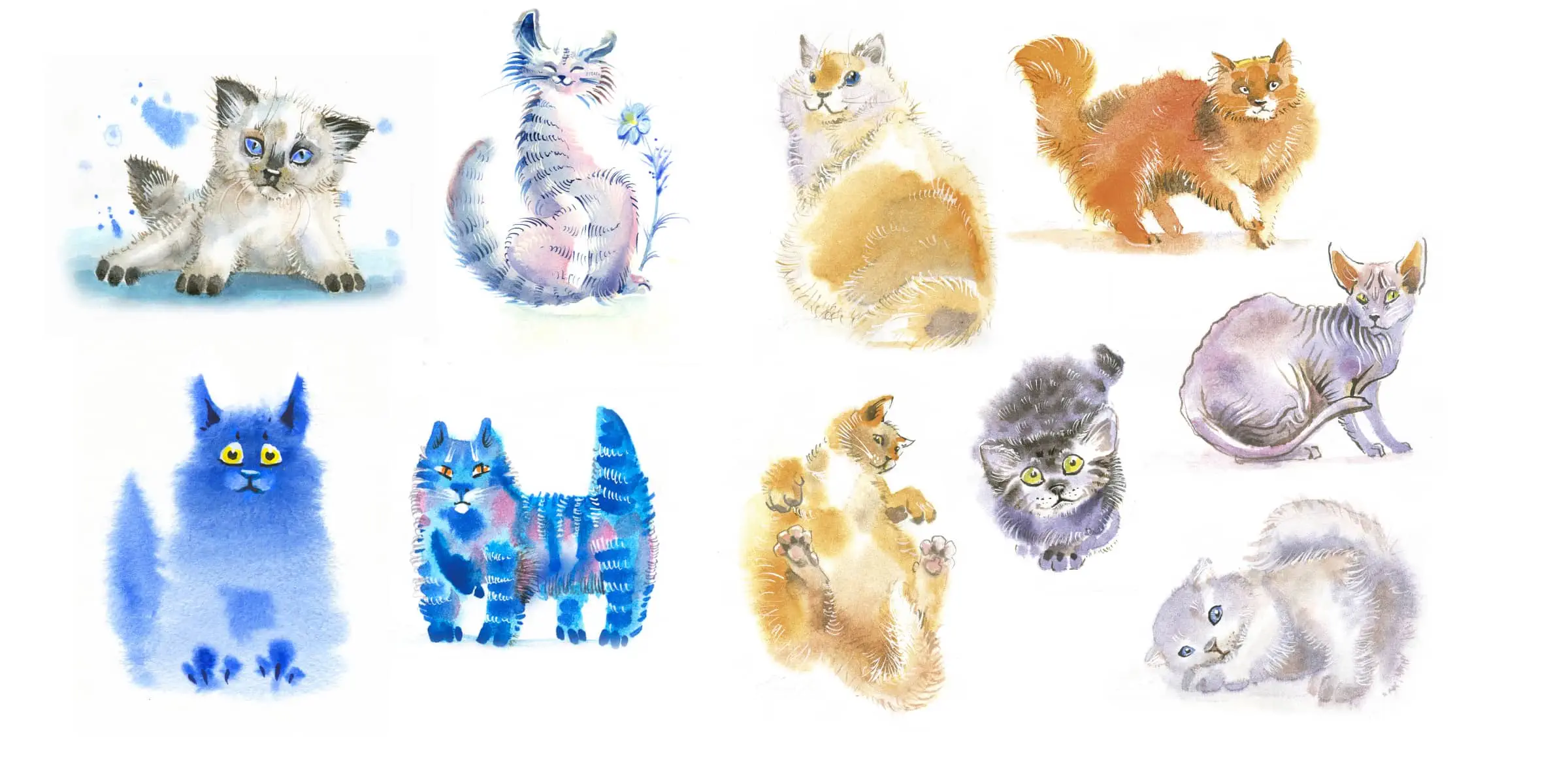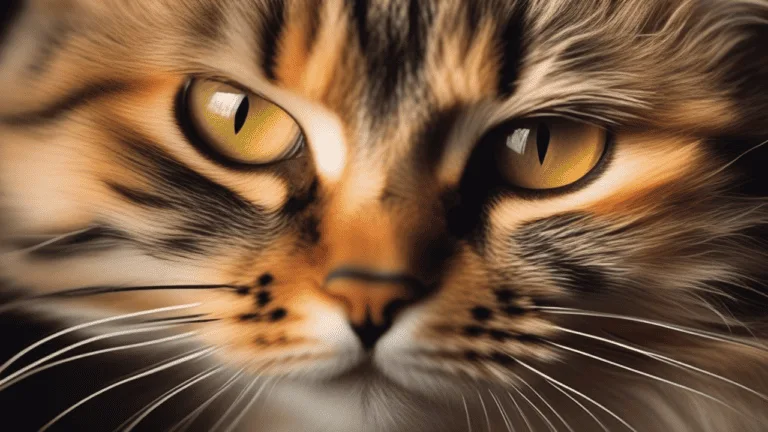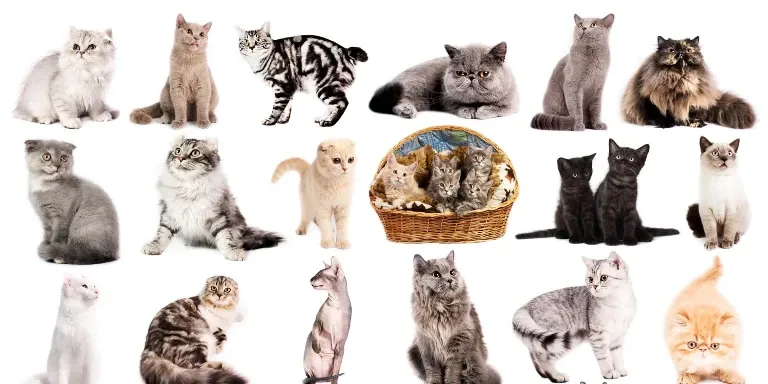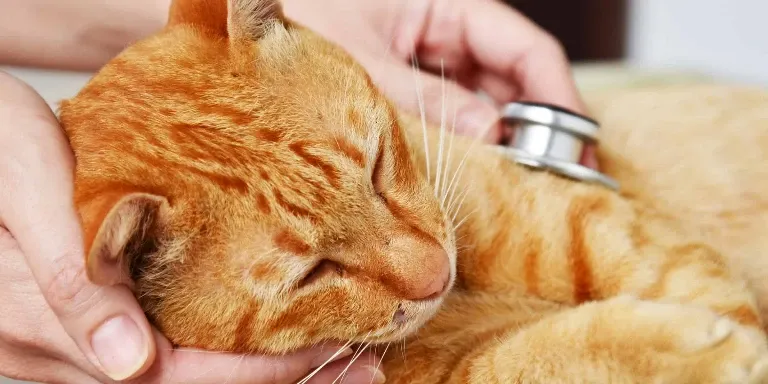The Best Fluffy Pancakes recipe you will fall in love with. Full of tips and tricks to help you make the best pancakes.

Mixed cat breeds occur when two different cat breeds mate and produce offspring with unique traits and characteristics. These cats are often referred to as ‘mutts’ or ‘moggies,’ and they can be just as lovable and unique as purebred cats.
There is no exact number of mixed cat breeds as there are countless combinations and variations. Mixed breed cats, also known as domestic shorthairs or domestic longhairs, can have a wide range of appearances and characteristics depending on their genetic makeup.
While the exact number of mixed cat breeds is unknown, it is safe to say that there are countless variations and combinations. Mixed cat breeds can have a wide range of physical traits and personalities, making each one truly one-of-a-kind.
In this article, we will explore the fascinating world of mixed cat breeds, from their history and appearance to how to identify and care for them. Whether you are a seasoned cat owner or considering adopting a mixed breed, this article will provide you with all the information you need to know.
Explanation of Mixed Cat Breeds
You might be wondering, “What exactly are mixed cat breeds?”Well, let me tell you: mixed cat breeds are feline companions that are the result of breeding two different purebred cats together.
Unlike purebred cats, mixed cat breeds can inherit a variety of traits from both of their parents. This can lead to a unique appearance, temperament, and health profile.
One way to determine the genetic makeup of a mixed cat breed is through genetic testing. This can help identify any potential health concerns that may arise due to the combination of two different breeds. However, genetic testing can be expensive and not always necessary if the mixed cat breed is healthy and thriving.
Breeding regulations for mixed cat breeds vary depending on the country and organization. Some countries may have strict regulations in place to ensure the health and welfare of the cats, while others may not have any regulations at all. It’s important to research and purchase from a reputable breeder to ensure the well-being of the cat.
Overall, mixed cat breeds offer a unique and diverse option for feline companionship.
History of Mixed Cat Breeds
Throughout the ages, feline crossbreeding has been a fascinating facet of feline history. It’s believed that mixed cat breeds have been around for centuries, with evolutionary origins dating back to ancient times. However, it wasn’t until the 19th century that crossbreeding practices became more formalized and intentional.
Here are three interesting facts about the history of mixed cat breeds:
- The first known cat breed to be intentionally created through crossbreeding was the Siamese. This breed was developed in the 1800s by crossing a domesticated cat with a wildcat from Thailand.
- In the early 1900s, cat shows became popular and breeders began experimenting with new combinations of breeds to create unique and desirable cats for show competitions.
- During World War II, many cat breeds were nearly wiped out due to food shortages and breeding restrictions. As a result, breeders began to crossbreed cats to increase genetic diversity and save certain breeds from extinction.
Overall, the history of mixed cat breeds is a rich and complex one. From the early days of unintentional crossbreeding to the intentional and strategic practices of modern cat breeders, these feline hybrids have captured the hearts and imaginations of people around the world.
Types of Mixed Cat Breeds
Now let’s take a closer look at the different types of mixed cat breeds. You’ll find that Domestic Shorthair and Domestic Longhair cats are some of the most common mixed breeds.
Bengal crosses are also quite popular due to their exotic appearance. Siamese crosses are another type of mixed breed that many people find to be fascinating.
Lastly, there are several other popular crosses that you may encounter when exploring the world of mixed cat breeds.
Domestic Shorthair/Domestic Longhair
Interestingly, Domestic Shorthair and Domestic Longhair cats are among the most common mixed breeds found in shelters, making them deserving of a loving home. These cats are known for their genetic diversity, which also means they are less likely to have inherited health concerns that can occur in purebred cats.
Here are a few interesting facts about these mixed breeds:
- Domestic Shorthair cats are known for their short, dense coat that requires minimal grooming.
- Domestic Longhair cats, on the other hand, have a long and silky coat that requires regular brushing to prevent matting.
- Both breeds come in a variety of colors and patterns, making them unique and individual.
Overall, these mixed breeds make wonderful pets for those looking for a loving and low-maintenance companion. With their diverse genetics and minimal health concerns, they’re a great choice for anyone looking to adopt a cat from a shelter.
Bengal Crosses
Bengal crosses are a unique and exotic type of feline that can add a touch of wildness to any household. These cats are the result of Bengal hybridization, a breeding technique that involves mating an Asian leopard cat with a domestic cat.
The first Bengal cross was created in the 1960s by a breeder in California, and since then, it has become a popular breed due to its distinctive markings and playful personality. Bengal crosses are known for their striking coat patterns, which are reminiscent of their wild ancestors. They have a spotted or marbled coat that can come in a range of colors, including brown, silver, and snow.
These cats are also highly active and require plenty of stimulation and exercise. Owners of Bengal crosses often describe them as playful, curious, and intelligent. If you’re looking for a feline companion that has a bit of wildness to it, a Bengal cross may be the perfect fit for you.
Siamese Crosses
If you’re looking for a feline companion that’s known for its striking blue eyes and talkative personality, a Siamese cross might be just what you’re looking for. Siamese cats are already a popular breed, known for their outgoing and sociable nature. When mixed with other breeds, they can bring new traits and characteristics to the table while still maintaining their Siamese charm.
Here are some popular Siamese mix breeds and their temperaments:
- Siamese x Persian: These cats have a mix of both breeds’ personalities, resulting in a friendly and affectionate cat that loves to cuddle.
- Siamese x Tabby: These cats are energetic and playful, with a love of exploring and a strong hunting instinct.
- Siamese x American Shorthair: These cats have a laid-back temperament and are known for being easy-going and adaptable to different environments.
No matter which Siamese crossbreed you choose, you can expect a cat that’s intelligent, curious, and vocal. They thrive on human interaction and make great companions for those looking for an active and engaging pet.
Other Popular Crosses
One of the most sought-after feline companions are the popular crossbreeds, which bring a unique set of traits to the table. These mixed cat breeds have become increasingly popular due to their unique looks and personalities.
Some of the most popular mixed breeds include the Bengal-Siamese, the Maine Coon-Ragdoll, and the Scottish Fold-American Shorthair. However, it’s important to note that breeding regulations and ethics should be taken into consideration when choosing a mixed breed cat.
Breeding regulations and ethics play a crucial role in ensuring that mixed breed cats are healthy and free from genetic disorders. It’s important to choose a reputable breeder who follows ethical breeding practices and conducts appropriate health screenings.
Additionally, it’s important to understand that mixed breed cats may not always have predictable traits and personalities, as their genetics can be complex. Overall, while popular mixed cat breeds can make great companions, it’s important to do your research and choose a breeder who prioritizes the health and well-being of their cats.
Appearance and Characteristics
There’s no denying that mixed cat breeds have unique appearances and characteristics, with over 70% of them having a distinct pattern or color variation. These variations are a result of breeding practices and genetic variations. The unique patterns and colors can also vary within a breed, making each mixed cat unique.
One of the most popular mixed cat breeds is the Bengal. They are known for their striking coat pattern, which resembles that of a wild cat. Bengals have a muscular build and are known for their high energy levels.
Another popular mixed breed is the Savannah. They are a cross between a domestic cat and a serval, a wild African cat. Savannahs can range in size from medium to large and have a distinctive spotted coat. They are known for their loyalty and affectionate personalities, making them a great choice for families.
Mixed cat breeds offer a wide variety of unique appearances and characteristics. Breeding practices and genetic variations play a significant role in determining these traits. From the striking patterns of Bengal cats to the affectionate personalities of Savannahs, mixed cat breeds are a testament to the vast diversity of feline genetics.
How to Identify a Mixed Cat Breed
To identify a mixed cat breed, you can look for distinct physical characteristics and traits that are specific to certain breeds. Some common markings that can help you determine the breed include the shape and color of the eyes, the length and texture of the fur, and the shape and size of the ears.
For example, if a cat has large, pointed ears and short, sleek fur, it may have Siamese or Oriental shorthair in its ancestry. Another way to identify mixed cat breeds is through genetic testing. This involves taking a DNA sample from the cat and analyzing it to determine its breed ancestry.
This method can be more accurate than visual identification, especially if the cat has a more complex mix of breeds in its background. However, genetic testing can be expensive and may not be necessary unless you are curious about your cat’s specific breed makeup.
Overall, identifying mixed cat breeds can be a fun and rewarding experience. By observing the cat’s physical traits and potentially using genetic testing, you can gain a better understanding of its unique background and characteristics.
Whether you are simply curious about your cat’s breed or you want to learn more about cat genetics, there are many resources available to help you identify your feline friend’s ancestry.
- Discovering your cat’s breed ancestry can be an exciting and fulfilling experience.
- Knowing your cat’s breed makeup can help you better understand its personality and behavior.
- Identifying mixed cat breeds can also be helpful for potential health issues that may be more common in certain breeds.
Mixed Cat Breed Adoption
If you’re looking for a furry friend to bring into your home, why not consider adopting a unique and one-of-a-kind feline with a blend of different ancestries? Mixed breed cats are as lovable and loyal as their purebred counterparts, and they come with a host of benefits that make them a great addition to any family.
One of the main benefits of mixed breed adoption is their unique traits and personalities. Since they come from diverse backgrounds, mixed breed cats exhibit a wide range of traits and characteristics that make them fascinating companions.
Adopting a mixed breed cat also means that you’ll be giving a loving home to an animal that might otherwise be overlooked. Many mixed breed cats end up in shelters due to their lack of pedigree or unconventional appearance, but they’re just as deserving of love and affection as any other cat. By adopting a mixed breed cat, you’re not only providing a home to a loving animal, but you’re also helping to reduce the number of cats in shelters.
Despite the benefits of mixed breed adoption, there are also some challenges that come with bringing home a cat of unknown ancestry. For example, it can be difficult to predict the temperament, size, and health issues that may arise in a mixed breed cat. However, these challenges can be overcome with proper research and preparation.
By working with a reputable shelter or rescue organization, and consulting with a veterinarian, you can ensure that you’re making a well-informed decision and providing the best possible care for your new companion.
Mixed Cat Breed Care
Taking care of a mixed breed feline requires a tailored approach that considers their unique personality and health needs. If you’ve just adopted a mixed breed cat, congratulations! The first thing you should do is schedule a visit with a veterinarian to ensure your new feline friend is healthy. Your vet can give you advice on vaccinations, dental care, and nutrition.
Grooming tips are important when taking care of your mixed breed cat. The grooming needs of your cat will depend on their coat type. For example, a long-haired cat will require more brushing to prevent matting and hairballs. Brushing your cat regularly will also help distribute natural oils throughout their coat, keeping it healthy and shiny. Additionally, trimming your cat’s nails and cleaning their ears as needed will help prevent infections and discomfort.
It’s essential to be aware of potential health concerns for your mixed breed cat. Like all cats, mixed breeds can be prone to dental problems, obesity, and urinary tract issues. To prevent these problems, make sure your cat has regular veterinary check-ups, a balanced diet, and plenty of exercise. Watch out for any changes in your cat’s behavior or appetite, which could be an early sign of illness.
By staying on top of your cat’s health, you can help them live a long and happy life.
Do Mixed Breed Cats Have Specific Characteristics Compared to Purebred Cats?
Most cats mixed breeds are known for their unique and diverse characteristics, often inheriting traits from multiple breeds. Unlike purebred cats, mixed breeds may have a wider range of personalities, appearances, and health qualities, making them a popular choice for many pet owners seeking a one-of-a-kind companion.
Conclusion
Congratulations, you’re now well-versed in the world of mixed cat breeds! From their fascinating history to their unique appearance and characteristics, you’ve learned quite a bit.
But the journey doesn’t have to end here. If you’re considering adopting a mixed cat breed, remember to do your research and find a reputable breeder or shelter.
And once you’ve brought your furry friend home, make sure to provide them with proper care and attention. Regular check-ups with a veterinarian, a balanced diet, and plenty of playtime are just a few ways to keep your mixed cat breed happy and healthy.
In conclusion, mixed cat breeds are a wonderful addition to any home. Whether you’re looking for a specific appearance or personality trait, there’s sure to be a mixed cat breed that’s perfect for you. So don’t hesitate to explore the world of mixed cat breeds and find your perfect feline companion today!








